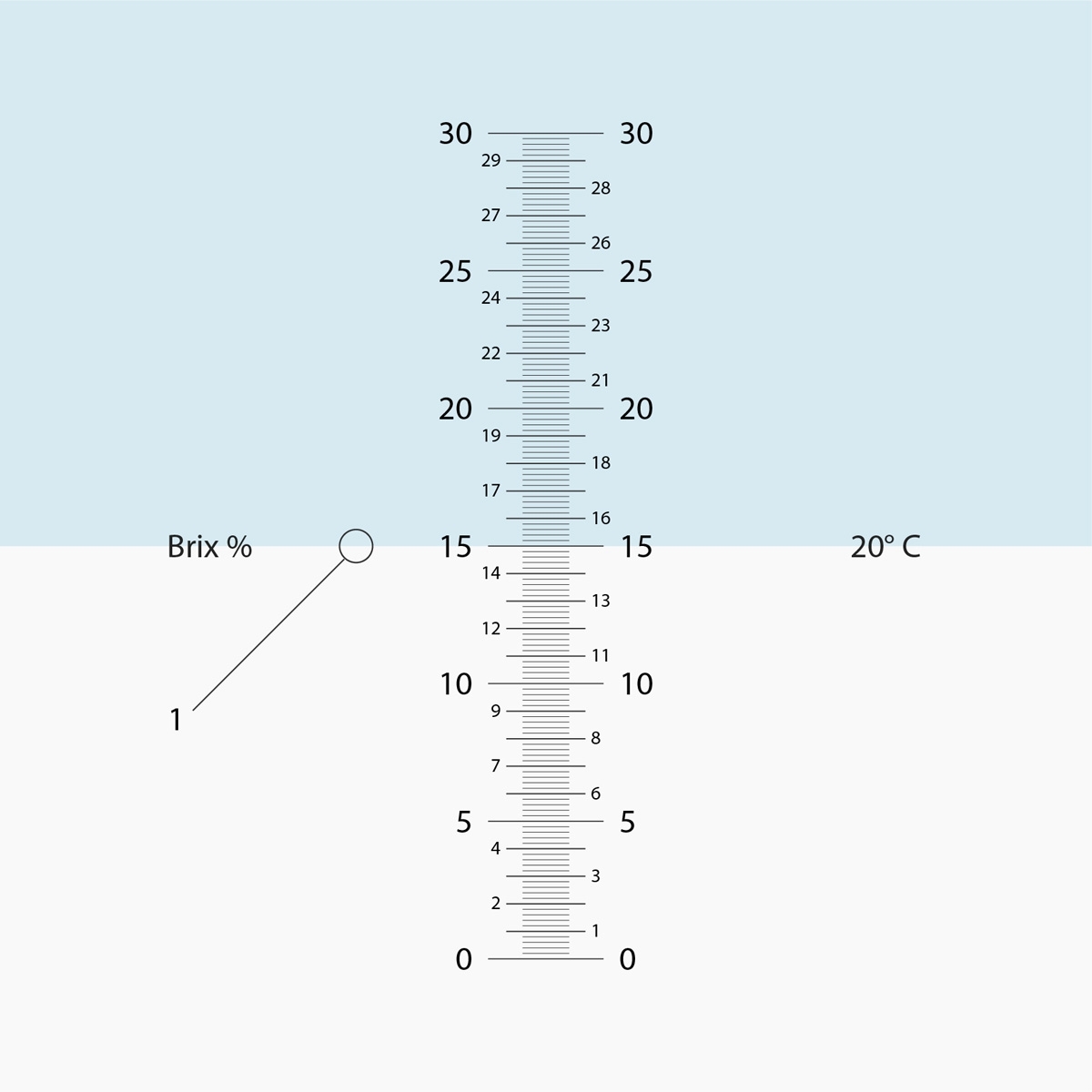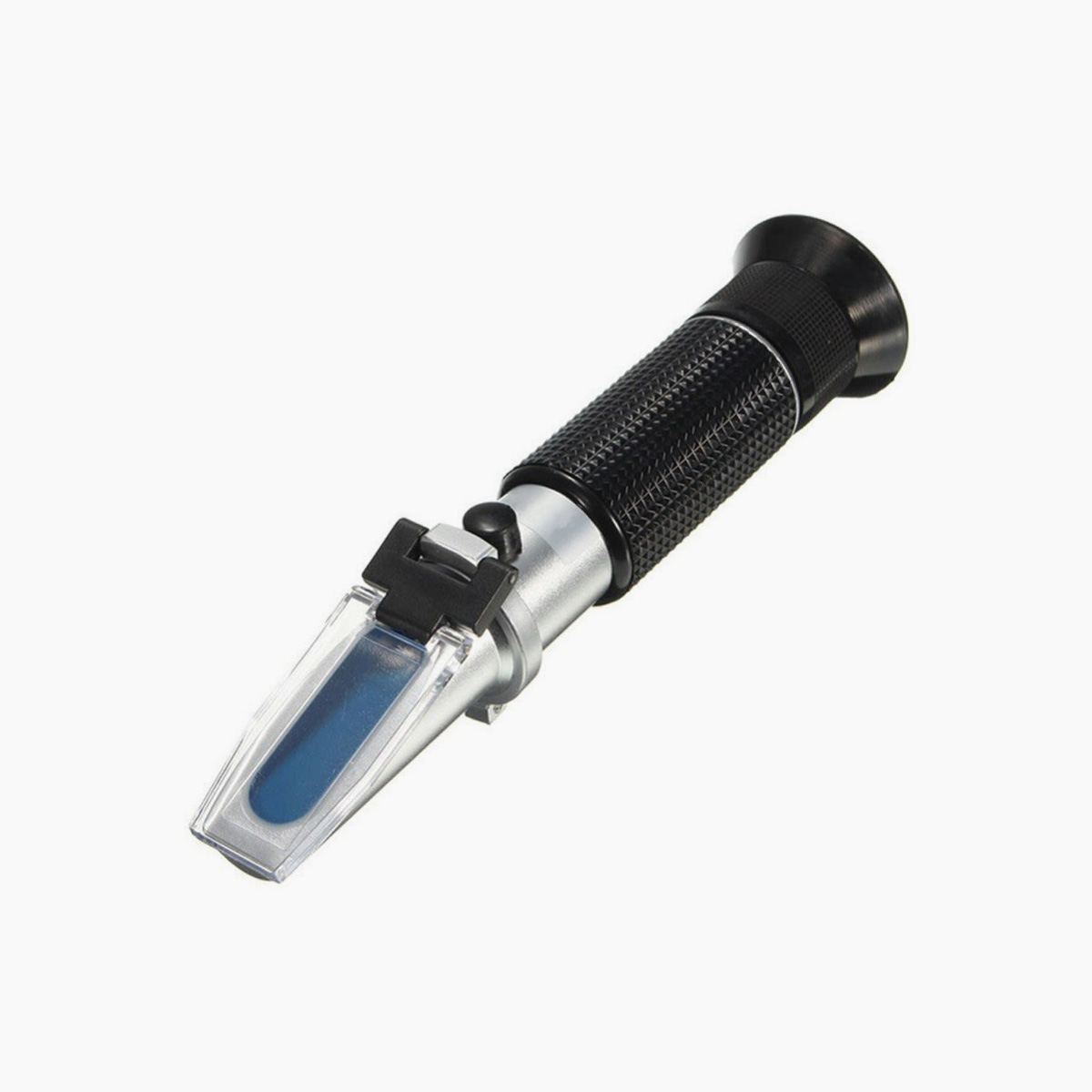Hand held refractometers are inexpensive, don’t require batteries and work in ambient light. They are a commonly used system for determining the sucrose content in the juice of coffee cherries prior to harvest. Farmers will usually take samples from several coffee cherries spread out over an area they wish to harvest to ensure they have a generalised picture of the ripeness levels. The extracted juice from the cherries is then spread across the lense of the refractometer. This lens is one side of a crystal. Unlike digital refractometers (discussed in detail in Advanced Coffee Making) which measure the way light bounces off a sample, handheld devices found on farms measure the change in the angle of ambient light that travels through a sample. A user simply looks through the refractometer like it was a telescope and views the change in angle of light as a line on an engraved scale inside the device. Coffee will usually register between 15 and 25° Brix.
Illustration left – 1: blue line indicates brix level. Photo right: A manual for hand-held refractometer.
Most meters used by farmers are calibrated to measure Brix, which is a system developed in the 19th century to determine the concentration of sucrose in water. One degree Brix (°bx) is 1 gram of sucrose in 100 grams of solution. Readings are presented as a percentage of the total mass of the liquid used in the sample. Because the extract of coffee cherries is not pure sucrose in water, the reading is an approximation of the total dissolved solids. Farmers will have their own preferred target reading. For example, Medellin based green coffee buyer Nikolai Furst tells us: ‘in Medellin in the dry season brix readings go up to 26°bx; meanwhile in the rainy season it will be around 18°bx. The highest level I have seen was a yellow typica variety in Libano Tolima at 32°bx. Usually yellow varieties mark higher brix than red ones.’
Brix is particularly helpful for farmers who strip pick or use mechanical harvesters because they will want a broad indication of what amount of cherry is already ripe.

